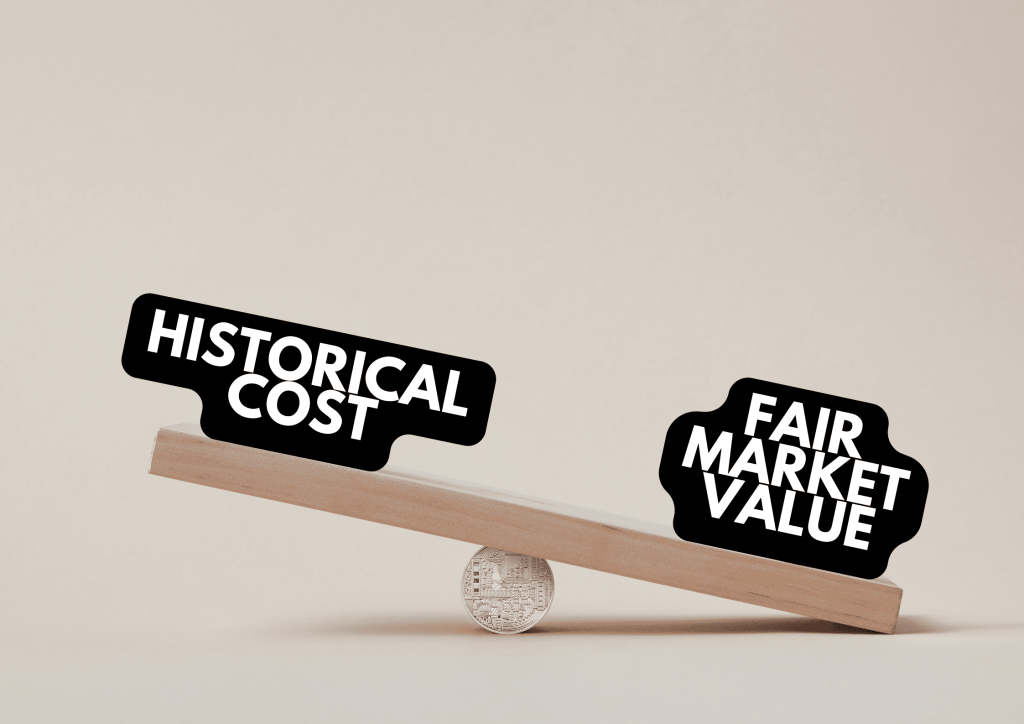Mark-to-market (MTM) refers to the practice of adjusting the value of an asset or liability to reflect its current market value, instead of its book or historical cost. This accounting method gives a more accurate representation of the financial position of a company by updating asset values daily or at regular intervals based on prevailing market conditions.
The importance of mark-to-market accounting becomes quite evident in the complex world of forex trading, where the ever-changing exchange rates and continuous price movements dictate market conditions.
Mark-to-Market: Breaking Down the Basics

In the simplest terms, MTM involves revaluing financial instruments at their current market value, offering an accurate figure that reflects true value rather than the original purchase cost. The generally accepted accounting principles (GAAP) mandate the use of mark-to-market accounting for certain securities and derivatives.
Assets and liabilities affected by MTM include futures contracts and mortgage-backed securities, among others. When these are marked to market, they reflect their fair market value – the price at which the asset or liability would change hands in a transaction between willing, informed, and unrelated parties.
For example, consider a farmer who enters into a futures contract to sell his crop at a future date. Each day, the futures contract is marked to market based on the day’s futures price change. If the price increases, the farmer’s account balance grows; if it declines, the account suffers a resultant decrease.
Similarly, in a short-margin account, the account is marked to market daily, and any short position will be adjusted according to the day’s price change. If prices rise, the short-margin account increases, and vice versa.
Also Read: Understand Supply and Demand for Trading
Impact on Forex Trading
In the world of forex trading, the mark-to-market accounting method is not only impactful but also imperative. Forex trading operates 24 hours a day, five days a week, with constant fluctuations in exchange rates across the globe. As such, forex traders need a real-time value of their open positions to understand their current financial standing accurately.
For instance, if a forex trader is in a long position on EUR/USD, this means the trader is betting on the euro to strengthen against the dollar. If the euro appreciates, the trader’s position will yield a profit, and their long-margin account will reflect this increase when it’s marked to market. Conversely, if the euro depreciates against the dollar, the long-margin account will show a decrease in value.
Additionally, market conditions such as changing interest rates in various countries can also impact forex trading. For example, when interest rates rise in the United States, the dollar typically strengthens, which can negatively impact a trader’s long position on EUR/USD. Again, the daily MTM will reflect this change, giving the trader an accurate picture of their financial status.
The MTM adjustments provide an accurate and timely valuation of a forex trader’s positions, allowing them to make informed decisions about whether to hold, sell, or buy more of a certain currency pair.
Mark-to-Market and Financial Crisis

The financial crisis of 2008 underscored one of the potential drawbacks of the mark-to-market accounting method. As financial institutions held significant amounts of mortgage-backed securities, the plummeting housing market led to a drastic decline in these securities’ value. The application of MTM meant these institutions had to write down the value of these securities to their fair market value, which was considerably lower.
This rapid decline in asset values dramatically affected many firms’ balance sheets, often making them appear insolvent on paper. This appearance of insolvency shook investor confidence, causing a further drop in the value of these institutions’ stocks. This vicious cycle, fueled by the MTM write-downs, contributed to a severe credit crunch and financial instability, eventually leading to a full-blown financial crisis.
Despite the role MTM played in the crisis, many argue that it was not the root cause, but rather it revealed the extent of overvaluation and poor risk management practices more quickly and starkly.
Mark-to-Market and the Accounting Sector
In the accounting sector, the mark-to-market method provides a more accurate representation of a company’s financial health by revealing the real-time value of its assets and liabilities. This method is applied not only to financial instruments but also to other items on the balance sheet, such as accounts receivable and inventory.
Let’s consider a company that has sold goods to several customers on credit, recorded in its accounts receivable. Suppose some customers are going through financial difficulties and might not be able to pay their dues. Under the mark-to-market method, the company would reduce the value of its receivables on the balance sheet to reflect this likelihood, typically by creating a contra-asset account for bad debts.
Similarly, suppose the company has a significant amount of inventory in its warehouse. If market conditions indicate a drop in demand for its products, the company might have to lower prices to encourage sales. Under the MTM method, the company would write down the value of its inventory to reflect its current market value, giving a more accurate representation of its potential sales revenue.
Mark-to-market accounting can be a double-edged sword for companies. While it provides a more accurate representation of a company’s current financial health, it can also lead to significant volatility in a company’s reported assets and earnings, particularly in fluctuating market conditions. It is for this reason that understanding the implications and applications of the MTM method is vital for any entity involved in the financial or accounting sectors.
The Balance Between Historical Cost and Fair Market Value

There’s a delicate balance between the historical cost and fair market value in mark-to-market accounting. Historical cost refers to the original purchase price of an asset, while the fair market value represents its current value in the market.
Marking to market aims to present the most accurate figure, which reflects the value results from similar assets under current markets, rather than sticking to the original purchase cost or historical cost. In situations like rising interest rates, this can result in a lower value for certain accounts.
The Nitty-Gritty of Mark-to-Market Accounting
Mark-to-market accounting can be applied to various asset accounts on a company’s balance sheet. It’s important to understand that these aren’t just the financial instruments, like futures contracts, securities, or forex positions, which are more commonly associated with MTM.
For example, consider the accounts receivable – an account called into play when a company extends credit to its customers. Now, what happens when customers are expected to default or delay their payments due to unforeseen circumstances? To keep the balance sheet reflecting the company’s true financial health, the doubtful receivables are marked down to their estimated collectible amount. The resultant decrease is recorded in a contra-asset account known as the provision for doubtful debts or bad debts. This practice gives a more accurate representation of the total value a company expects to receive, enhancing transparency in its financial reporting.
Mark-to-Market in Personal Accounting
In personal accounting, a similar situation may arise with homeowners’ insurance. Consider a house purchased several years ago at its original purchase price or historical cost. If the house is insured based on this cost, the insurance may not cover the entire replacement cost in the event of a loss, as property values generally appreciate over time.
Here, the mark-to-market concept would suggest insuring the house at its current value, which will more likely cover the replacement cost. Essentially, the house is marked to market, ensuring an accurate figure is considered for insurance purposes.
Market Conditions and Mark-to-Market
While the mark-to-market method provides a more accurate representation of an asset’s value, it’s crucial to remember that it can also result in significant financial changes based on prevailing market conditions. When market values decrease substantially, like during a financial crisis, MTM can lead to significant write-downs, reducing a company’s value on paper and potentially affecting its survival.
Conversely, when the market is thriving, and asset prices are increasing, MTM can lead to an increase in the value of certain accounts on a company’s balance sheet. This could result in the recognition of unrealized gains, making the company look more profitable than it might be when considering the historical cost accounting method.
MTM and Forex: A Close Relationship

The forex market, with its constant fluctuations, bears a close relationship with the mark-to-market accounting method. Each day, forex positions are marked to market to reflect their current value in light of that day’s exchange rate movements.
This regular adjustment to the current market value offers an accurate picture of a forex trader’s financial position. It’s also why the forex market, with its high volatility and round-the-clock trading, makes frequent use of mark-to-market.
Conclusion
In conclusion, mark-to-market accounting is a vital practice in today’s financial landscape, providing a more accurate representation of the value of assets and liabilities in line with current market conditions. It’s a practice that impacts various sectors, from the securities market to the forex market, from large corporations to personal accounting.
While the method has its share of criticism, particularly for its role in amplifying the effects of the financial crisis, its importance in providing a realistic picture of a company’s financial health cannot be denied. The balance between historical cost and fair market value is a delicate one, but mark-to-market accounting ensures that this balance reflects the most accurate figure. As such, understanding mark-to-market accounting is essential for anyone involved in financial markets or personal investment.
Also Read: Psychology of Market Cycles
FAQs
How does mark-to-market accounting impact a small business owner’s balance sheet?
If you’re a small business owner, mark-to-market accounting can significantly impact your balance sheet. For instance, suppose you have inventory that you bought at a certain cost. If the current market value of that inventory falls, you would need to adjust the value of the inventory on your balance sheet to reflect this decrease. This reduces the total value of your assets and, consequently, your overall business’s value on paper.
Similarly, if you have accounts receivable and anticipate that some of your customers might not be able to pay their dues, you would reduce your receivables’ value on your balance sheet accordingly. This adjustment ensures that your balance sheet reflects the most accurate picture of your financial position.
How does mark-to-market affect a Forex trader’s daily operations?
As a forex trader, the mark-to-market method plays a critical role in your daily operations. It impacts the value of your open forex positions as it adjusts these positions to reflect their current market value each day. If you have a long position on a currency pair, and the exchange rate moves in your favor, the value of your position will increase when it’s marked to market. Conversely, if the exchange rate moves against you, the value of your position will decrease.
These adjustments allow you to accurately assess your current financial position. They also inform your decisions about whether to hold onto your positions, close them, or open new ones based on current market conditions.
Why was mark-to-market accounting blamed for exacerbating the 2008 financial crisis?
During the 2008 financial crisis, many financial institutions held significant amounts of mortgage-backed securities. As the housing market declined, so did the value of these securities. Due to mark-to-market accounting rules, institutions had to adjust these securities’ value on their balance sheets to reflect their significantly lower market value.
This led to massive write-downs of assets, making many institutions appear insolvent on paper. This perception of insolvency shook investor confidence, leading to a further decrease in these institutions’ stock prices. This cycle of declining asset values and investor confidence, partly fueled by the mark-to-market method, contributed to the severity and length of the financial crisis.










